CIC Puerto Real
1. PREHISTORY
The first settlers
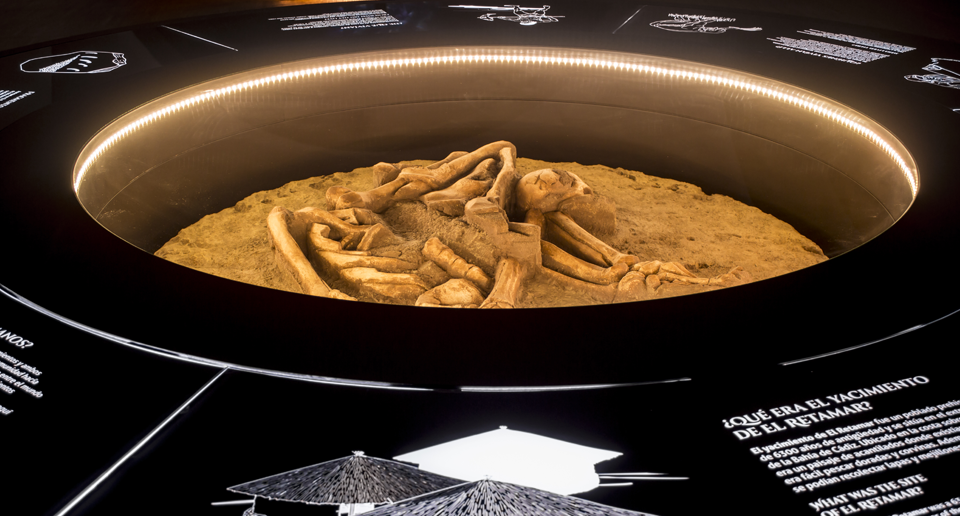
The visit begins with a reproduction of the burial site of “El Retamar”, a site of great interest because it allows us to reconstruct the transition from hunter-gatherer communities in the southwest of Andalusia to sedentary farming communities in the territorial framework of the Bay of Cadiz.
The remains of stone tools, which are numerous and varied at the site, reveal a society with a high degree of specialization in terms of the working methods of the hunter-gatherer communities of the late Paleolithic and early Neolithic, or in other words, the Mesolithic: geometric microliths; carved edges for hunting, fishing and shellfishing; for the processing of vegetables: incipient elements of sickle, blades with abrupt retouch and abrupt edge.
It is precisely the latter that link these societies with the beginning of the production economy and the establishment of tribal models of social organization in semi-sedentary habitats.
The hunter-gatherer communities would be subject to a wide mobility between the Atlantic coast and the Cadiz mountains; in winter they would occupy the coast and in spring-summer they would carry out the big hunts in the interior; it is very likely that these concentrations of hunting groups played a substantial role in the beginnings of the first economic and social formations.
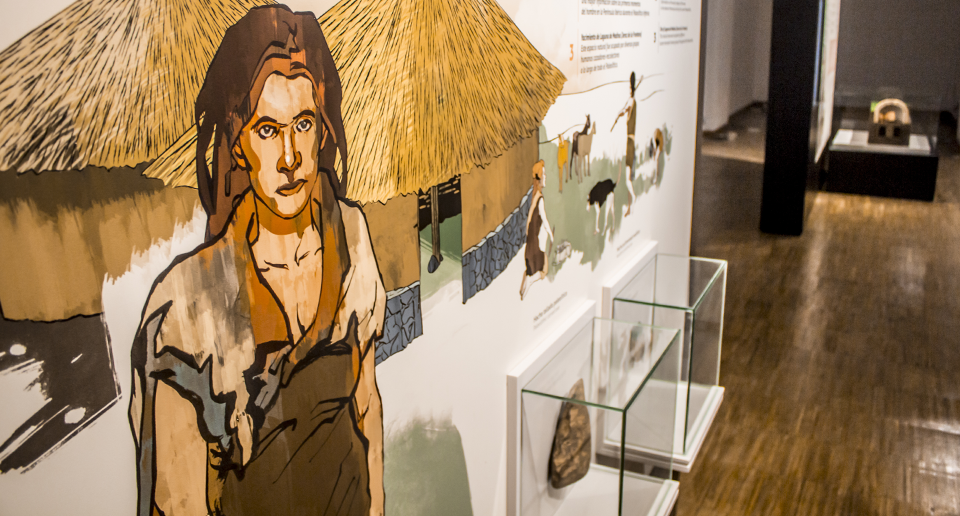
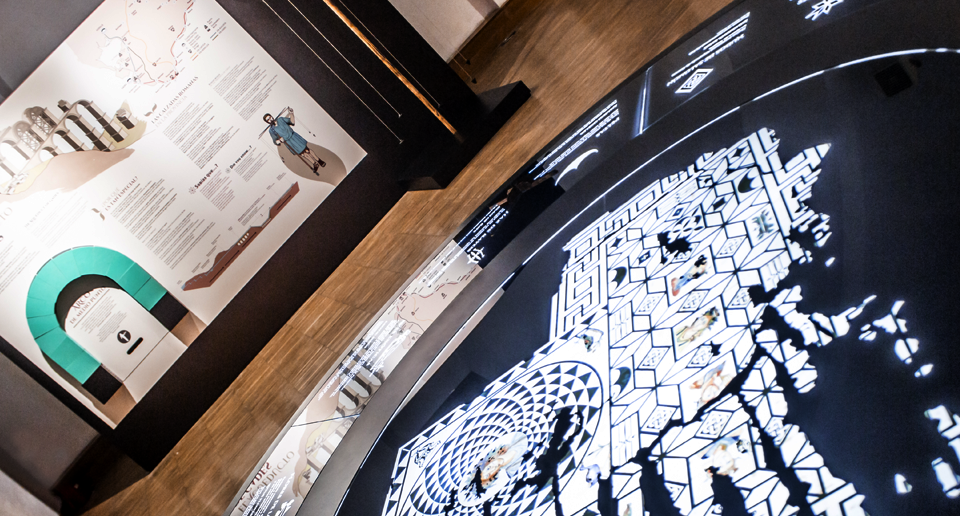
The chronology of this mosaic has been fixed towards the end of the 2nd century or the first quarter of the 3rd century AD.
The Puente Melchor mosaic stands out not only for being unique in the area but also for its dimensions, quality, technique and representations. It is a mosaic pavement in which a great richness is contemplated, that welcomes in its carpets the most characteristic elements or decorative repertoires of Roman times such as the stars of losanges, peltas, swastika border, rosette of curvilinear triangles, etc., inherited not only from the Italic world but also from the East and North Africa, with whom they had continuous commercial relations.
2. ROMANIZATION
The antiquity
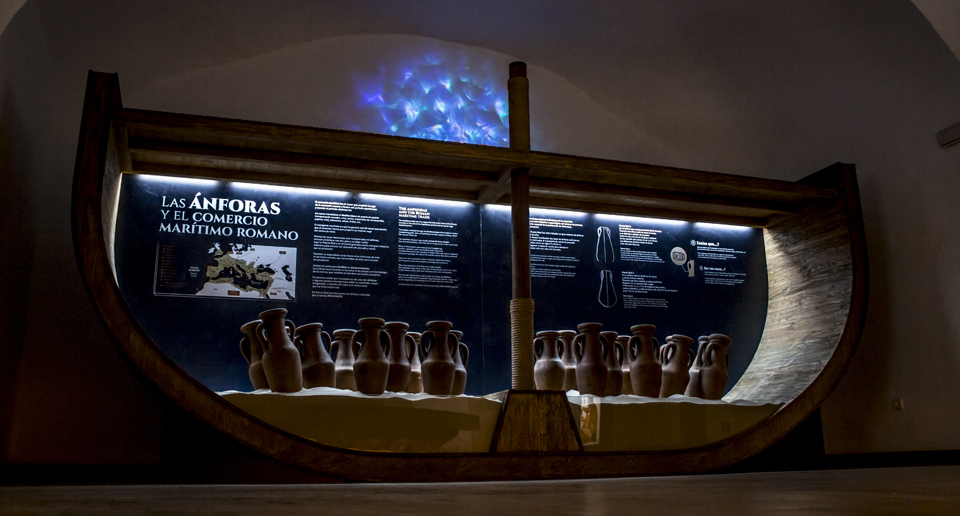
The Romanization process, from the end of the 3rd century to the end of the 1st century B.C., involved the extensive occupation of the territory from the triangle formed by the nuclei of Gadir (Cádiz), Asta Regia (Mesas de Asta) and Asido (Medina Sidonia) and the proliferation of rustic settlements in the territory.
The integration of Gades to the Roman orbit and the rise of the Cádiz family of the Balbos, supposes the development of the territory both from the point of view of the infrastructures (Roman Aqueduct to Gades or development of the terrestrial communications), as well as from the point of view of the division of the territory for its economic use.
Most of the settlements we know of are pottery and amphora production workshops, which developed their activity from the end of the 1st century B.C. and the beginning of the 2nd century B.C..
The deposits of the potteries of Cantera Lavalle, Casines, Carpio Chico, El Almendral and Casa del Gallego are not earlier than the first century B.C.E. and products made here can be traced to various points of the Empire. At the beginning, this activity was parallel to agricultural or fishing activities, dependent on the villages.
From that moment on, due to the development of the production of salted meats and sauces, the demand for containers skyrocketed, causing the owners of potteries to channel their production to the sale of amphorae, producing a phenomenon of pottery specialization.
Sites such as the El Gallinero oven are made up of small installations related to agricultural or fishing production. On the contrary, the pottery of El Olivar de los Valencianos worked in a different way, it presents a more “industrial” activity because it shows that part of the amphora production was destined for sale.
Little by little, small establishments are disappearing in favor of large production centers such as those of Puente Melchor and Villanueva. The production of amphorae for wine, sauces and oil is exported as far away as Septem Fratres (Ceuta).
The appearance of the Roman villa of Puente Melchor has given more archaeological relevance to the pottery complex of the Bay of Cadiz. It shows a clear evidence of a manufacturing complex with effective and continuous occupation, from the second half of the first century B.C. to approximately the middle of the fourth century A.D.
In this luxurious villa a mosaic was excavated that occupied the floor surface of the triclinium. This Puente Melchor mosaic measures 5.44m x 6.78m, features geometric, figurative and floral decoration, and has a large rosette of curvilinear triangles that houses a medallion with the figure of the god Bacchus inside, and has been on display at the Archaeological Museum of Cadiz since 2016.
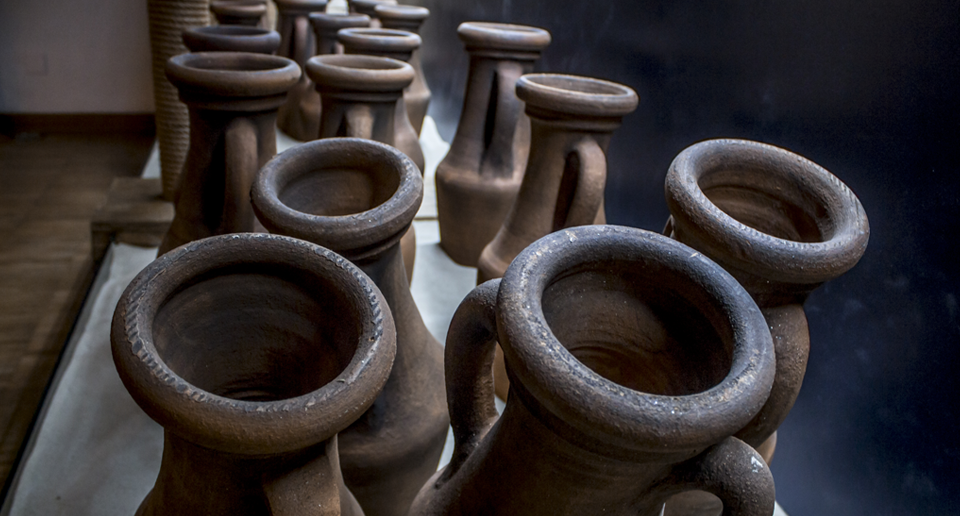

This, together with a rapid increase in temperature, which caused the melting of the ice caps, the expansion of forests and the rise in sea level, marked the transition from an economy based on hunting and gathering to one based on a production economy, in which fishing, shellfishing, the exploitation of land and livestock as communal properties, generated changes in technology, lifestyles and, by extension, in the forms of consciousness, thought and ideology.
3. FOUNDATION
The Royal Port of the Hapsburgs
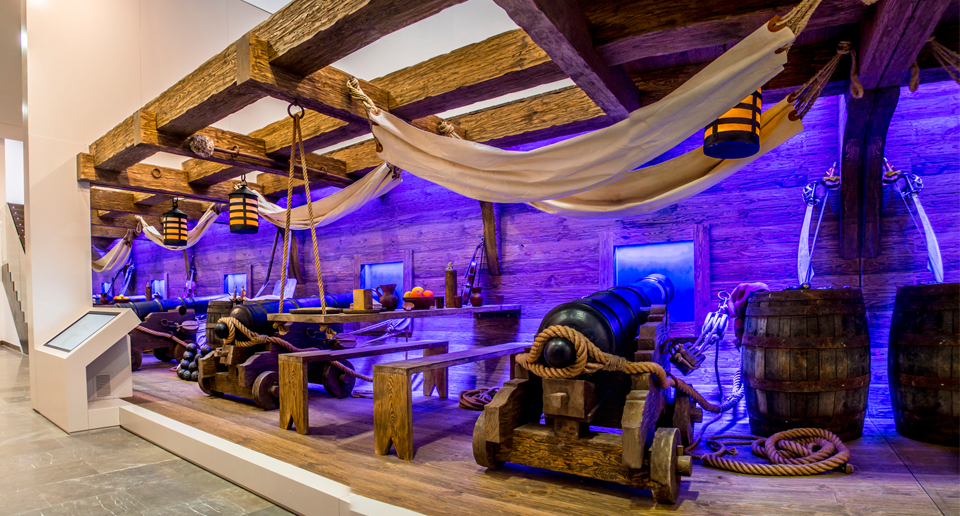
During the reign of Alfonso XI the Christians took over the territory occupied today by Puerto Real. The city of Jerez takes over the land and a period of rivalries and disputes with Cadiz begins. The Catholic Monarchs ended up intervening by creating a town with independent jurisdiction from Jerez and Cadiz.
The reasons for the foundation were both political and economic. They were looking for a sheltered and safe port, dependent on the crown, from which the ships engaged in the maritime siege of the kingdom of Granada could sail. They were also looking for a place with access to the sea that would counteract the influence of the rest of the ports in the bay, in the hands of noble lineages.
Thus, the Charter of Foundation was granted on June 18, 1483 by the Catholic Monarchs in Cordoba, where they were preparing for the war against Granada.
The newly created village will need a few years to develop as such. Thus, on June 23, 1484, Juan de la Fuente, mayor of Casa y Corte, obtained the power to distribute the salt mines of the municipality.
By a royal provision signed by the Queen on April 25, 1485, the town was allowed to “have a boat that carries passengers from Matagorda to Cadiz”. Of the same day and month are two other royal provisions that refer to the confirmation of some of the privileges enjoyed by the puertorrealeños.
In 1486, the corregidor of Puerto Real obtained the concession of a third of the goods confiscated from the heretics. The church of Puerto Real is to be built with them.
This first independent journey only lasted until October 1488, when the town was placed under the tutelage of the city of Jerez by means of a royal provision signed in Valladolid.
The legal regulation of the municipal offices was not made until 1510, through the “Ordinances of Puerto Real”. According to them, Jerez de la Frontera was involved in the election of the main municipal offices.
A royal provision of 1543 grants the Villa its sovereignty and independence, although Jerez will never recognize it and will continue to intervene in it almost until 1646, when General Francisco Díaz Pimienta obtains the concession of Puerto Real through its purchase from the king.
Puerto Real maintains a dual trend. On the one hand, it will be oriented towards the countryside and, on the other, towards the sea, laying the foundations that will make development possible in the 18th century. The fishing dedication and salt extraction of the Puertorrealeños increased and even small factories and warehouses were built in the Trocadero where the work of fairing and repairing ships began.
With the colonization of America, the bay of Cádiz is dedicated to the supply of goods and food necessary for the journey, as well as to the repair of the damage caused by the voyage in the ships. Thus, on the grounds of the Trocadero, the foundations of today’s shipbuilding were laid.
The poor economic situation in Spain from 1646 during the reigns of Philip III, Philip IV and Charles II, will lead to the sale of offices, the auctioning of tax collection and the sale of royal possessions. This is how General Francisco Díaz Pimienta gained possession of the town of Puerto Real in 1646 for the amount of 36,916 silver ducats.
Finally, in 1676, Puerto Real was freed from the domination of the manor through the purchase of its own freedom, paid for by the pockets of all the neighbors.
4. ESPLENDOR
The splendor of the Villa
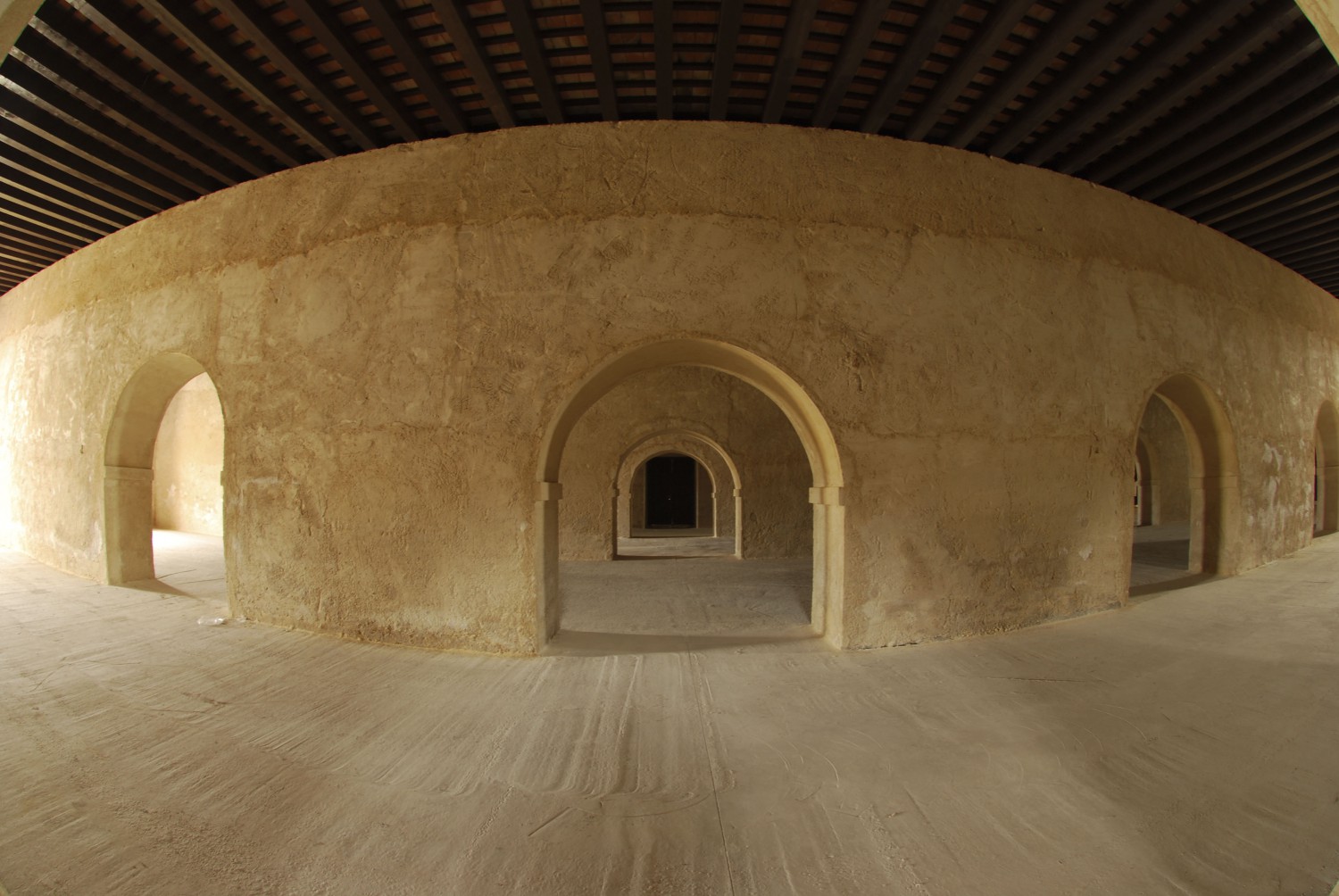

From the point of view of historical development, the eighteenth century was a time of boom and splendor for the population. These are years of prosperity in direct relation to the economic situation. The transfer of the Casa de la Contratación to Cadiz in 1717 was a fundamental milestone for the economy of Cadiz and the towns of the Bay.
At the end of August 1701, an Anglo-Dutch squadron, composed of one hundred and twenty combat ships and seventy-four transport ships, attacked Cadiz. The castle of Santa Cruz de la Matagorda participates in the defense. To take the capital by land, the army landed in Puerto de Santa Maria a total of 14,000 men, passed to Puerto Real and the town was destroyed and sacked.
But after these years will come others marked with the sign of reconstruction and progress. The transfer of the Casa de Contratación to Cadiz marked the beginning of a phase of strong growth, which led to demographic and urban development.
In the middle of the century, the village had about 5,000 inhabitants. At the end of the century the population figure was over 10,000.
The active population is basically dedicated to the naval industry and commerce, with the Arsenal of La Carraca and the Caño del Trocadero, complemented by agriculture and fishing. Industries manufacturing rigging, copper parts, soap, biscuit and liquor are good examples of this.
During these years, especially during the reigns of Charles III and Charles IV, civil works were carried out, reflecting the economic expansion:
The works of the wharf, the water supply, the boat bridge on the San Pedro River and the Mercado de Abastos, still in use. The historic center, with the construction of private buildings, acquires its greatest expansion. The large houses of noblemen stand out, some of them three stories high, with stone facades and coats of arms.
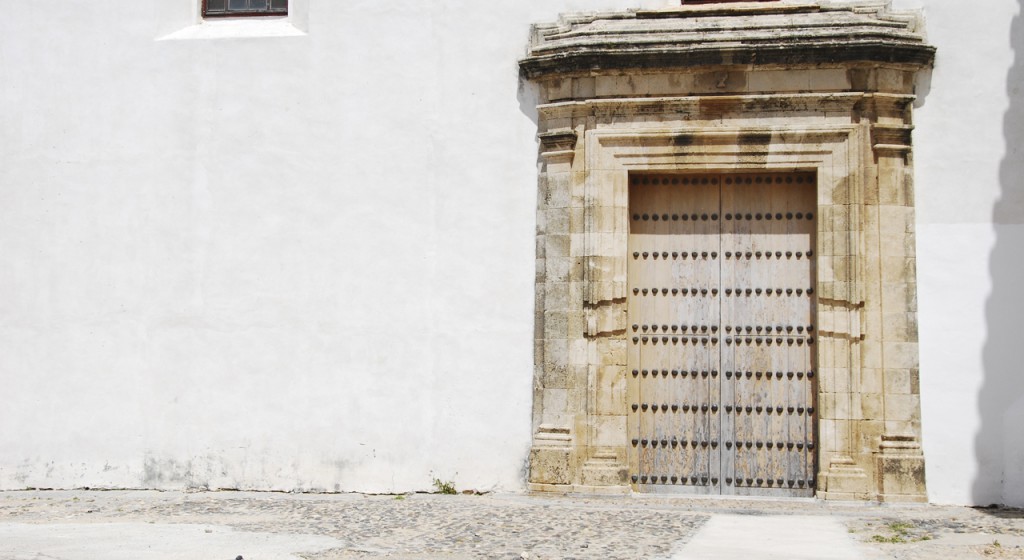
In terms of religious architecture, the construction of the Church of San José stands out.
By this time the San Benito church was already finished, built on top of an old hermitage, in the vicinity of which the first cemetery was built. The Santo Domingo de Filipinas Hospital was also built at this time. In addition, work was carried out to expand and improve the convent of the Friars Minimal de la Victoria.
5. DECLINE AND RECOVERY
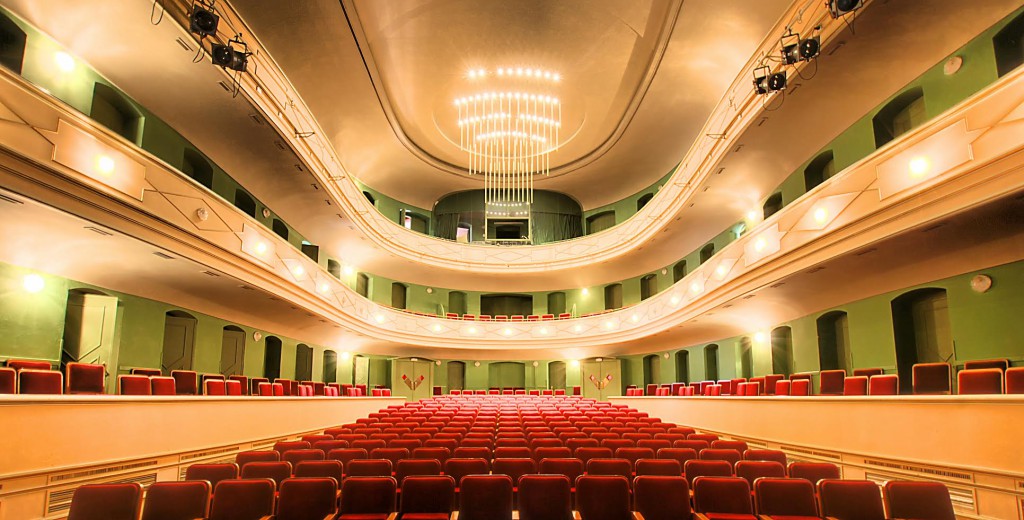
The conflict with England at the end of the 18th century marked the beginning of the decline of Puerto Real in the first half of the 19th century. The naval blockade to which the Bay of Cadiz is subjected will seriously harm the development of trade with America and Puerto Real, dedicated to the construction and loading of ships and with industries and activities directly related to the supply of expeditions, will suffer the consequences.
This fact was compounded by the yellow fever epidemic declared in 1800. It is estimated that in three months more than two thousand Puerto Ricans could have lost their lives. As a direct consequence, a large part of the economic activity is paralyzed, in particular the supply of Cadiz.
But the definitive blow to the population occurred on February 4, 1810. In their advance towards Cadiz, Napoleon’s troops enter Puerto Real. In its retreat, the army led by General Alburquerque destroyed the bridge over the Guadalete River, forcing the enemy to divert its path through the Cartuja. Some seven thousand people left the town to take refuge in La Carraca, Isla de León and Cádiz, leaving around one thousand five hundred.
The British army remains in Matagorda Castle in an attempt of defense but ends up abandoning it. The French set up a camp in Pinar de la Algaida and another in Villanueva. For this purpose, numerous houses in Puerto Real were demolished in order to take advantage of their materials in the fortification of the town, establishing redoubts at the entrances of the roads and at the dock and Caño del Trocadero.
Similarly, batteries were established at various points and at Punta de la Cabezuela for the bombardment of Cadiz. Likewise, they seized the grain stores and the existing naval effects, destroying orchards and groves.
The balance after two and a half years of occupation was between eight hundred and nine hundred houses destroyed, two thirds of the hamlet. In 1813 there were about two thousand inhabitants left in the town.
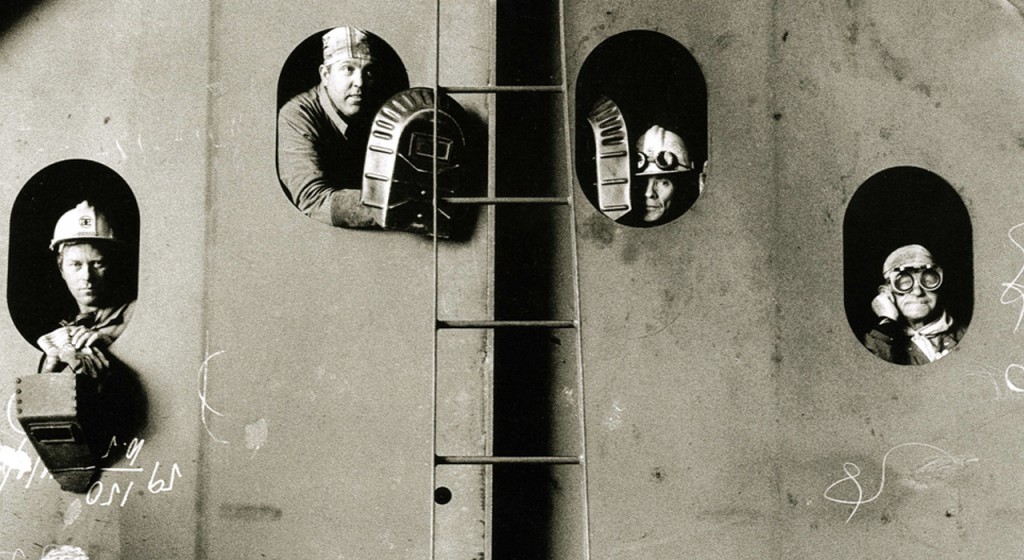
Another factor that will condemn Puerto Real to decadence is the process of independence in America that began after the Cortes de Cadiz. The loss of the colonial market will be reflected in the locality. Interrelated with each other, that is, the destruction of the means of production by the war and the disappearance of the market, a process of re-ruralization began in Puerto Real.
After the brief liberal period that Puerto Real lived after the Napoleonic invasion, in 1814 an absolutist period began until 1820 when the liberal uprising of Rafael de Riego took place. The king abides by the Constitution of 1812 but asks for help from the absolutist powers. A French army, under the name of the Hundred Thousand Sons of St. Louis, under the command of the Duke of Angoulême, was responsible for the restoration of absolutism in Spain. The army headed for Cadiz, a stronghold of the liberals, arriving at Puerto Real.
In Puerto Real a “cortadura” had been built to stop the enemy advance, but finally the contingent reached the Cabezuela to besiege the capital. The invading army established a forced loan and Puerto Real was forced to supply it with the consequent economic damage.
The predominant industrial economic activity of the previous century was replaced by agriculture. The appearance of the first cattle fair in 1843 is a sign of this change, as an attempt at economic recovery.
It was in the middle of the century when the recovery began. In 1852 one of the first railroad lines in Spain was built between Jerez and El Trocadero.
But the definitive recovery of the industrial vocation will take place with the installation of the Company founded by Antonio López, Marquis of Comillas. From then on, the shipbuilding industry was almost completely dominated.
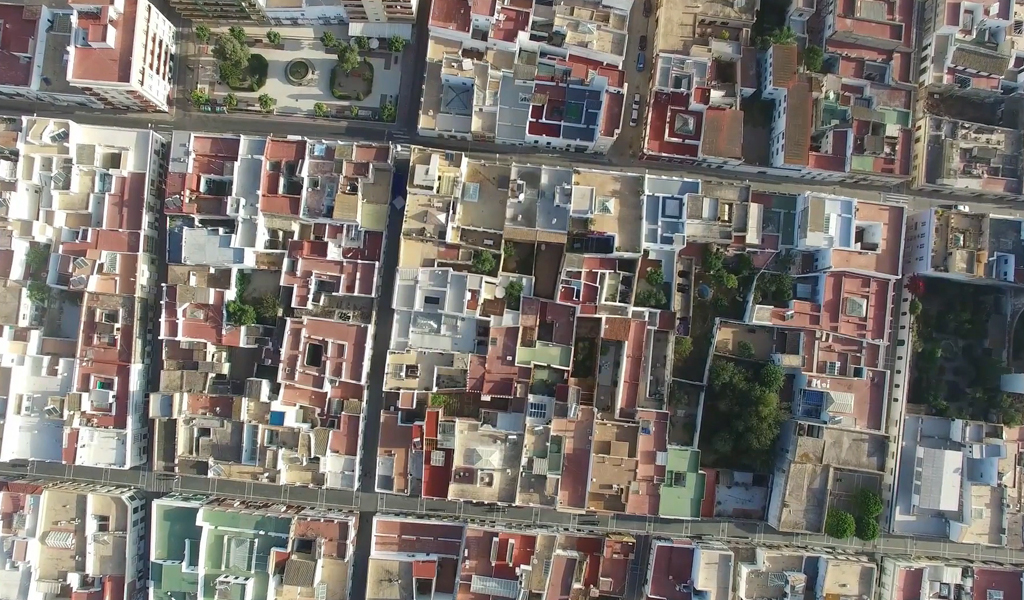
Significant works of these years were the construction of the railway network, the new San Roque cemetery, the Porvenir gardens, the remodeling of the Plaza de Jesús, the Teatro Principal and the lighting of the streets, paving and sidewalks.
The 20th century brought changes and new airs with improvements in the infrastructures; the naval activity continued to be one of the main pillars of the local economy, the details and vicissitudes of this will have repercussions on the population throughout the century. In 1924, the arsenal of La Carraca and Isla Verde, until then dependent on Puerto Real, became part of San Fernando. The civil war, as in the rest of the country, produced a socio-political and economic stagnation; it will be in the fifties when a process of recovery of the economic activity begins, delaying the political and social recovery until the end of the seventies with the reinstatement of democracy.





